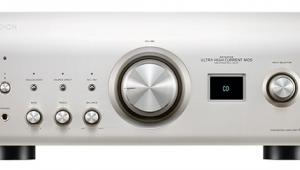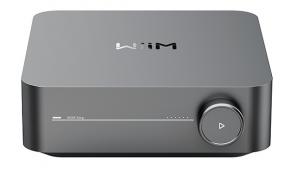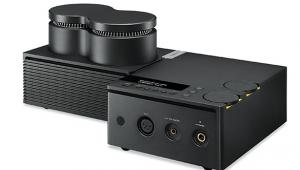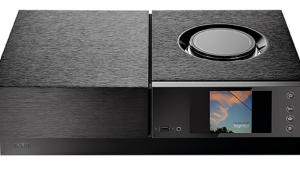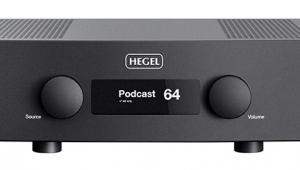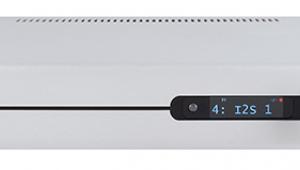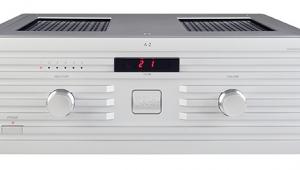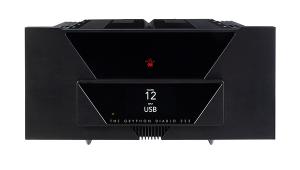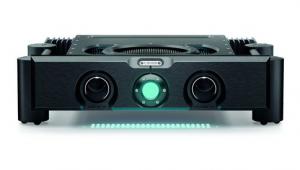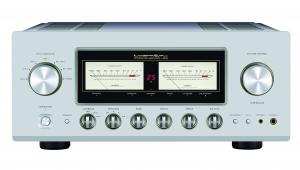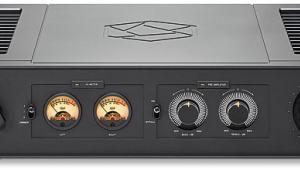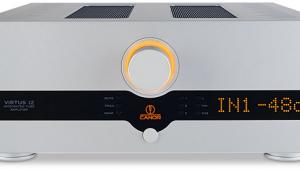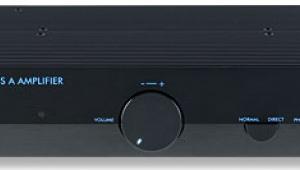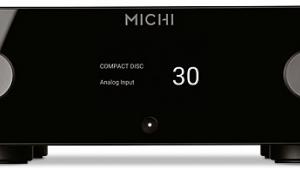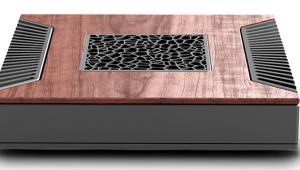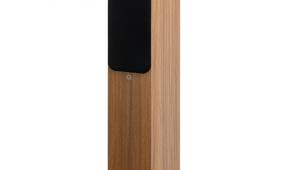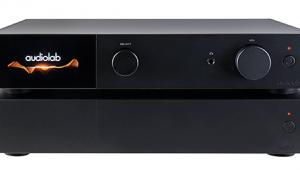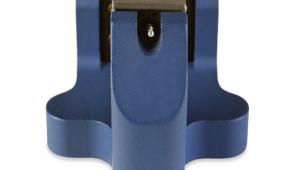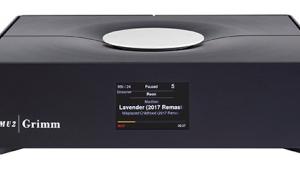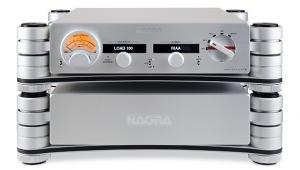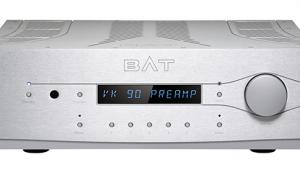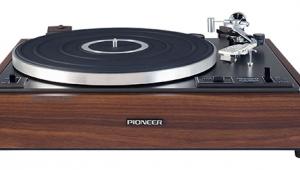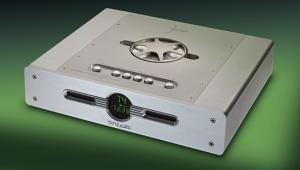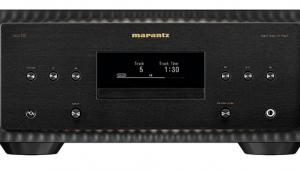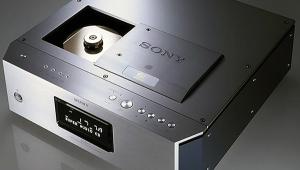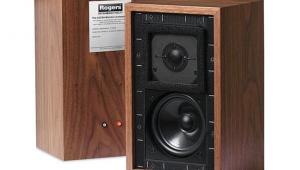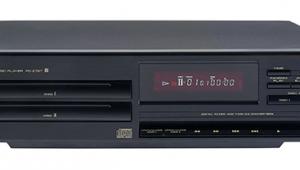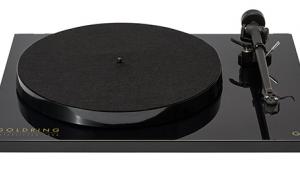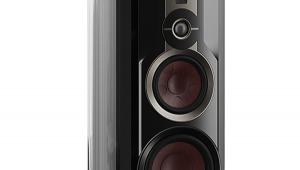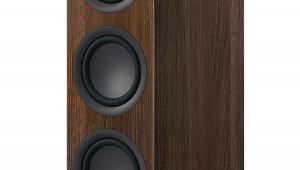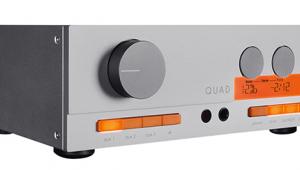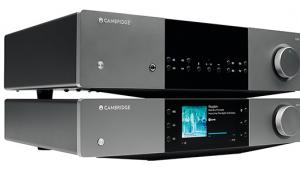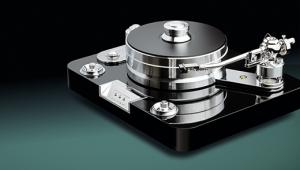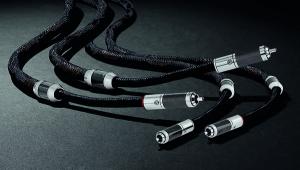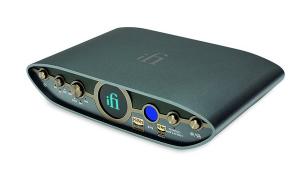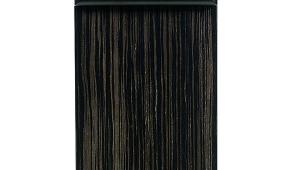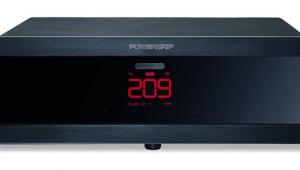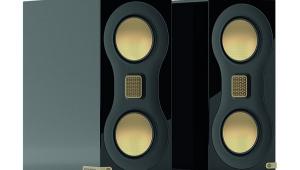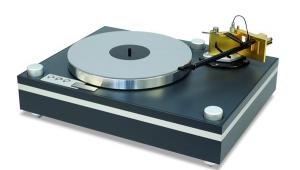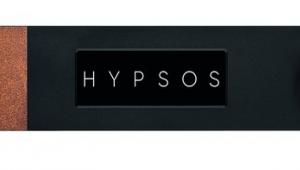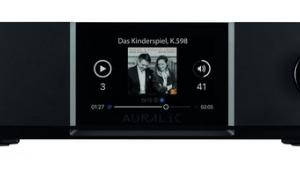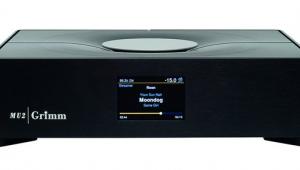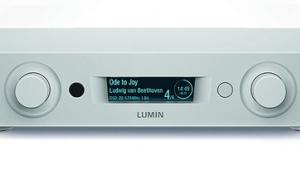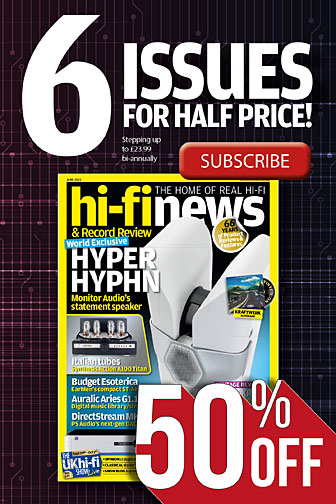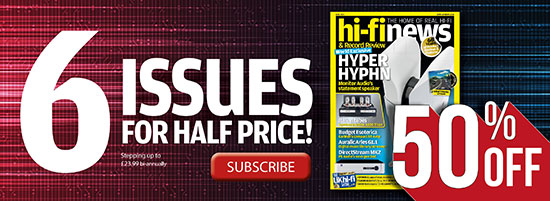T+A R 2500 R all-in-one receiver


Looking for a simple, no-frills, ‘straight wire with gain’ amplification solution? If so, it’s a case of ‘move right along, please – nothing to see here’, for T+A’s R 2500 R, available in black or silver at £12,905, is a prime example of large-scale integration in the quest for one of those ‘just add speakers’ systems. Yes, you could connect other source components to it, thanks to a choice of analogue and digital inputs – but really, why would you want to?
In practice, the R 2500 R has you covered for streamed audio of all kinds, be it from local storage or online sources, offers power amplification of sufficient shove to drive just about any speakers [see PM's Lab Report], and has your legacy listening sorted via its built-in CD drive and FM/DAB+ radio tuner. Furthermore, to compound the ‘new meets old’ vibe of this hi-tech, high-end ‘music centre’, it even has a pair of VU meters on its otherwise somewhat austere modernist fascia.
Past and present
Actually, maybe that should be ‘retro-modernist’, given that the looks here date back more than three decades. Launched in 1992, the R-Series was the first major product group from the still-family-owned, still-making-everything-in-Germany company. And it’s still at the core of T+A’s offering, with the R-Series 2000, of which the R 2500 R is the flagship, making its debut in 2015 at Munich’s High End Show.
Described as a Multi-Source Receiver, it brings together the best parts of the rest of the series in one substantial 14kg housing. It’s so complete that the only real option here is the choice of MM or MC phono modules, factory-fitted internally in their own shielded housing and replacing one of the two sets of RCA unbalanced line inputs (there is also a single set of balanced XLRs).
Considering the massive capabilities of the R 2500 R, the face it presents to the world is appealingly simple, with little more than a couple of rotary controls. There’s volume to the right, multifunction source/track selection/menu navigation to the left, and a couple of handfuls of buttons for functions such as speaker A/B selection, tone on/bypass, and to enable or disable the unit’s preamplifier output.
The CD player uses a slot-loading mechanism, there’s a USB-A port on the front for quick hook-up of storage devices, and there’s a balanced 4.4mm Pentaconn headphone socket to match the company’s Solitaire models, with adapters available from T+A – and third-party sources – for other headphones. Oh, and the amp’s relatively simple display can be dimmed or turned off, as can the illumination for the meters, which also offers a choice of white or blue/green/red lighting.
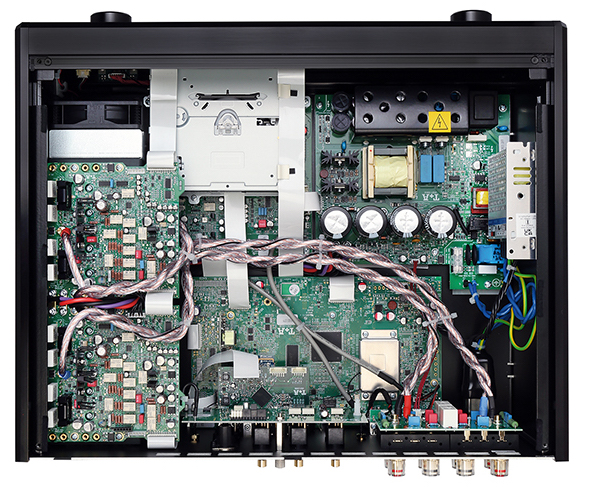
A very comprehensive remote control handset is provided, covering not just basic operation but extremely deep dives into the R 2500 R’s menu system. I suspect, however, many owners will opt for the latest G3 version of T+A’s MusicNavigator app [HFN Apr ’24]. This provides a clear and easily configurable portal to access all of the unit’s setup options and operations, and is pretty much a must-have if you’re going to use all the streaming functionality. Frankly, swiping and clicking content on the app is a much more satisfying experience than trying to navigate music files using the remote handset while peering at the unit’s display.
Double DAC
The R Series sits below the company’s range-topping HV (High Voltage) lineup, but the HV technology is still trickled down here, improving the linearity of the preamp stage while the power amp matches its rated 140W/8ohm output [see PM's Lab Report] with impressive dynamic headroom, speed and slam. Also present, in an enclosure pretty well packed with PCBs [see boxout], is T+A’s twin DAC solution, which handles both PCM and 1-bit DSD data in their native form, with no format conversion, by using separate paths for the two kinds of stream. DSD is handled by T+A’s ‘True 1-Bit converter’, with two filter options, while PCM is passed to an array of four Burr-Brown converters per channel, with six digital filter and oversampling modes [see boxout].
Streaming is in the hands of the company’s latest platform. This accesses a wide range of services, and in this generation adds the Connect versions of Spotify and Tidal, and also AirPlay, in audiophile quality; playback of uncompressed FLAC files via aptX HD Bluetooth; and native network playback of DSD files. In addition to the Wi-Fi/Ethernet network, the unit can play from a USB-B ‘computer audio’ input, USB-A storage, and one coaxial and two optical digital inputs. Separate power supplies are used for the digital and analogue sections of the R 2500 R, with galvanic isolation between the digital platform and the analogue amplification to keep noise at bay.
![]() Musical delights
Musical delights
Enjoying a journey in nostalgia, the arrival of the R 2500 R coincided with the BBC Proms season. Via my roof-mounted aerial, I was able to hear all the clarity and dynamic power offered by a stirring performance of Elgar’s 2nd Symphony by the BBC Scottish Symphony Orchestra conducted by Ryan Wigglesworth, and many other musical delights from both the Royal Albert Hall and elsewhere. Switching between analogue and digital radio, streamed files and CD showed just how even-handed the T+A architecture is across all its capabilities.
Listening to music from The Trondheim Concertos [2L-172-SABD], where the sheer definition on offer gave fine insight into the meticulous playing, to that old barnstormer, Frankie Goes To Hollywood’s Welcome To The Pleasuredome [ZTT CID101], proved hugely rewarding. With the latter, the R 2500 R sounded as dramatic and hard-hitting as any streamer/amplification combination I’ve encountered, finding new strengths in my little PMC Prodigy 5 floorstanding speakers. They sounded huge beyond their compact size, the bass both extended and tight and impactful. Layered above that, all the intricacies of Trevor Horn’s production were laid out for inspection, from the nuances of Holly Johnson’s voice to the sometimes-complex percussion, all to striking effect.
Call the cops
It’s noticeable that the choice of filter and oversampling mode seems to have more effect when playing CDs than with the R 2500 R’s other onboard sources. I found the ‘Bezier/IIR’ setting had the best effect with some very early CD releases, with their often-brash sound. Experimentation can also be worthwhile with flat-sounding lossy Internet radio streams. But as I tend to say when discussing these options, the best setting for your listening will be as much a matter of taste as any notion of correctness.

On, then, to a network storage stream of this year’s four-disc Super Deluxe edition of The Police’s 1983 Synchronicity album [UMC/Qobuz download], packed with out-takes, demos and live recordings. The R 2500 R gave a fine account of the band’s reggae-influenced sound, and a wide-open view of the contribution of each of the trio, from ‘Every Breath You Take’ and ‘Don’t Stand So Close To Me’ (among the live tracks here), to the exuberance of much of the early material included and the way the title track is broken down in multiple demos and outtakes. There are times, with re-releases like this, that one feels every last scrap of material has been swept up from the metaphorical cutting-room floor, but here each bit adds to the story of the album.
String theory
The R 2500 R doesn’t require big and bold recordings to show how well it deploys its combination of digital excellence and gutsy amplification. Pat Metheny’s recent MoonDial album [Modern Recordings, Qobuz download, 96kHz/24-bit] is described as a ‘solo guitar recording of a Linda Manzer Baritone Nylon String Guitar using an AEA R88 ribbon mic with a Go Acoustic Audio pickup’. Either way, the sheer impact and presence of the instrument is at first startling and then thrilling, from the extension of the lower strings to the fine detail of the touch and resonances further up the fretboard.
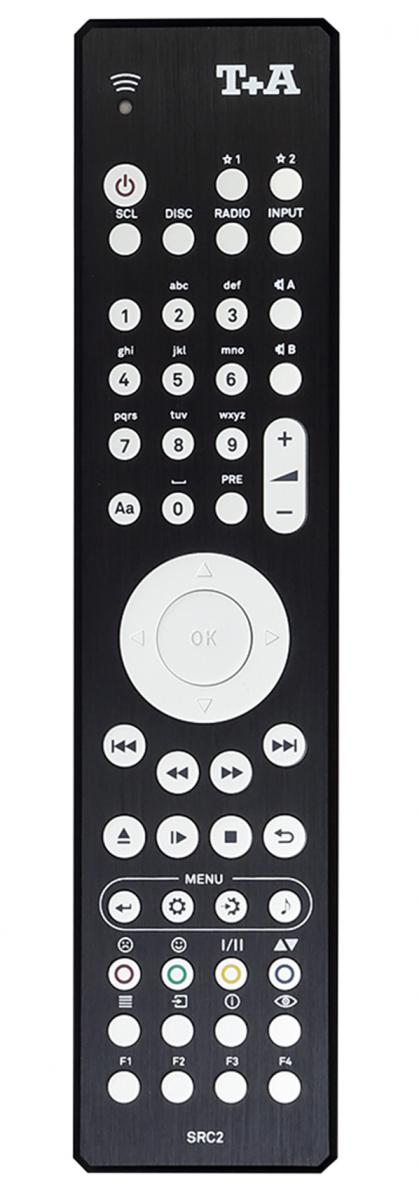
This album is gentle and soothing, but no less interesting for that, and the R 2500 R really draws the listener into the playing. And it did the same thing with the one-microphone recording of Julie Adams’ Land Of My Early Childhood: Bartók Piano Works [Hunnia HRES2411]. Played in the DSD256 in which it was recorded – the R 2500 R can handle up to DSD512, and 768kHz/32-bit PCM – this release had a breathtaking sense of the piano being before the listener, while the playing, at turns limpid and gentle and sprightly in its dancing rhythms, was totally captivating and enchanting.
Pleased to meet you
Toward the end of my listening sessions, some kind of devilment led me to the Punk Me Up – A Tribute To The Rolling Stones compilation [Cleopatra Records; Tidal Stream]. Anything that starts with a Jah Wobble version of ‘Start Me Up’, has a bass-driven take on ‘Sympathy For The Devil’ by Anti-Nowhere League, and ends with a chaotic, thrashing ‘Street Fighting Man’ – well, it can’t be too bad, can it? I’m not sure it’s what the dedicated engineers at T+A had in mind when they brought all their digital and analogue knowhow to bear on the R 2500 R, but it sounded a thundering, snarling riot. Which is just as it should be.
Hi-Fi News Verdict
In a changing network world there’s an argument for not putting all your audio eggs in one basket, but T+A’s R 2500 R has both the futureproofing and performance to challenge, and dispel, all that. Superbly built, generously equipped, technically and musically impressive, it would slot into even very high-end systems, drive just about any sensible speakers, and deliver with no fuss. Ideal.
Sound Quality: 88%
